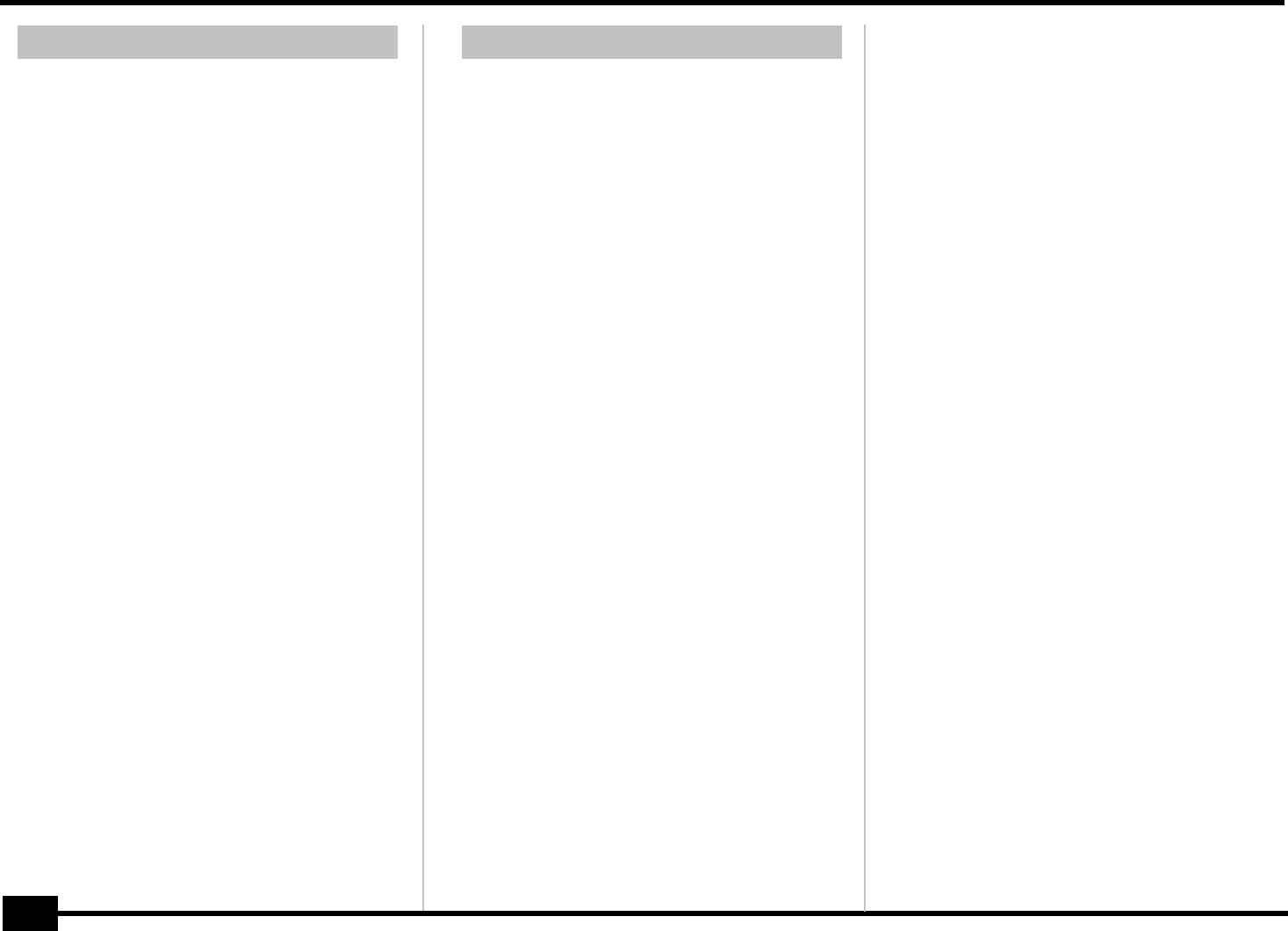
r
EM-15 OR
50
Select this method when you want to record piano music,
or any other song that requires the use of only one sound
for the entire keyboard. What is recorded onto Track “A”
cannot be replaced without overwriting the entire song.
Here, however, you can record a first Upper part (Track
“A”) and add a second one on track “B” during your sec-
ond session.
The most obvious use for this function is to record the
left-hand part of a piano piece the first time around, and
the right hand-part using 2nd TRACK. If you like, you can
add a drum accompaniment to your playing.
Note: The Upper part you add using the 2nd TRACK function
(Track “B”) will use the same Tone as the part on track “A”.
First recording pass
(1) Press the [STYLE] button below the display and check
whether the INTRO, ORIGINAL, etc. icons are displayed.
(2) Press the [PIANO] button so that neither the
[ARRANGER] nor the [ORGAN] icon is displayed
([M≈DRUMS] should not appear either).
(3) Select the desired Tone for the Upper part (see p. 23).
(4) Set the tempo using the TEMPO [–][+] buttons.
(5) If necessary, select the Music Style whose drum part
you want to use as backing. See p. 22.
(6) Press the [● REC] button once or twice to select the
[REC∏] function.
(7) Start recording in one of the following ways:
a) Play the first melody notes. This will start the record-
ing without the Arranger drums. You can add them
whenever you like by pressing [START/STOP]. The drums
will start at the next downbeat.
Note: If you start recording without the Arranger drums and
want to bring them in at a later stage, it would be a good idea to
switch on the metronome.
b) Press the [START/STOP] button to start Arranger
drum playback with the selected Division.
c) Press [SYNC START] to activate this function, and
play one or several notes. The Arranger drums will start
in sync with your first notes.
Recording in PIANO mode
Choisissez cette méthode quand vous voulez enregistrer
un morceau de piano ou tout autre morceau requérant
l’utilisation d’un seul et même son pour le clavier entier.
Ce qui est enregistré dans la piste “A” ne peut être rem-
placé sans écraser le Song entier. Ici, vous pouvez enregis-
trer une première partie Upper (piste “B”) et ajouter une
deuxième dans la piste “A” au cours de la seconde prise.
Cette fonction vous servira sans doute le plus souvent
pour enregistrer la partie de main gauche d’un morceau
de piano durant la première prise et pour y ajouter la par-
tie de main droite avec 2nd TRACK. Vous pouvez aussi
étoffer votre jeu d’un accompagnement de batterie.
Remarque: La partie Upper que vous ajoutez avec 2nd TRACK
(piste “B”) utilise le même son que dans la partie de la piste “A”.
Première prise d’enregistrement
(1) Appuyez sur [STYLE] en-dessous de l’écran et vérifiez si
les icônes INTRO, ORIGINAL, etc. sont ou non affichées.
(2) Appuyez sur le bouton [PIANO] de sorte que ni l’icône
[ARRANGER] ni l’icône [ORGAN] ne soit affichée
([M≈DRUMS] ne devrait également pas être affichée).
(3) Affectez le son voulu à la partie Upper (voyez p. 23).
(4) Réglez le tempo avec les boutons TEMPO [–]/[+].
(5) Si nécessaire, choisissez le style dont vous voulez la
partie Drum comme accompagnement. Voyez p. 22.
(6) Appuyez une fois ou deux sur le bouton [● REC] pour
choisir la fonction
[REC∏].
(7) Lancez l’enregistrement en suivant une des méthodes
ci-dessous:
a) Jouez les premières notes de la mélodie. Vous lancez
ainsi l’enregistrement sans la batterie de l’Arranger.
Vous pouvez l’ajouter à tout moment en appuyant sur
[START/STOP]. La partie de batterie démarre sur le pro-
chain temps fort.
Remarque: Si vous lancez l’enregistrement sans la partie de
batterie de l’Arranger et que vous comptez l’incorporer plus loin
dans le morceau, nous vous conseillons d’activer le métronome.
b) Appuyez sur [START/STOP] pour lancer le jeu de bat-
terie de l’Arranger avec la Division en vigueur.
Enregistrement en mode PIANO
EM-15orGB_F_Ar.book Page 50 Wednesday, July 25, 2001 6:34 PM


















